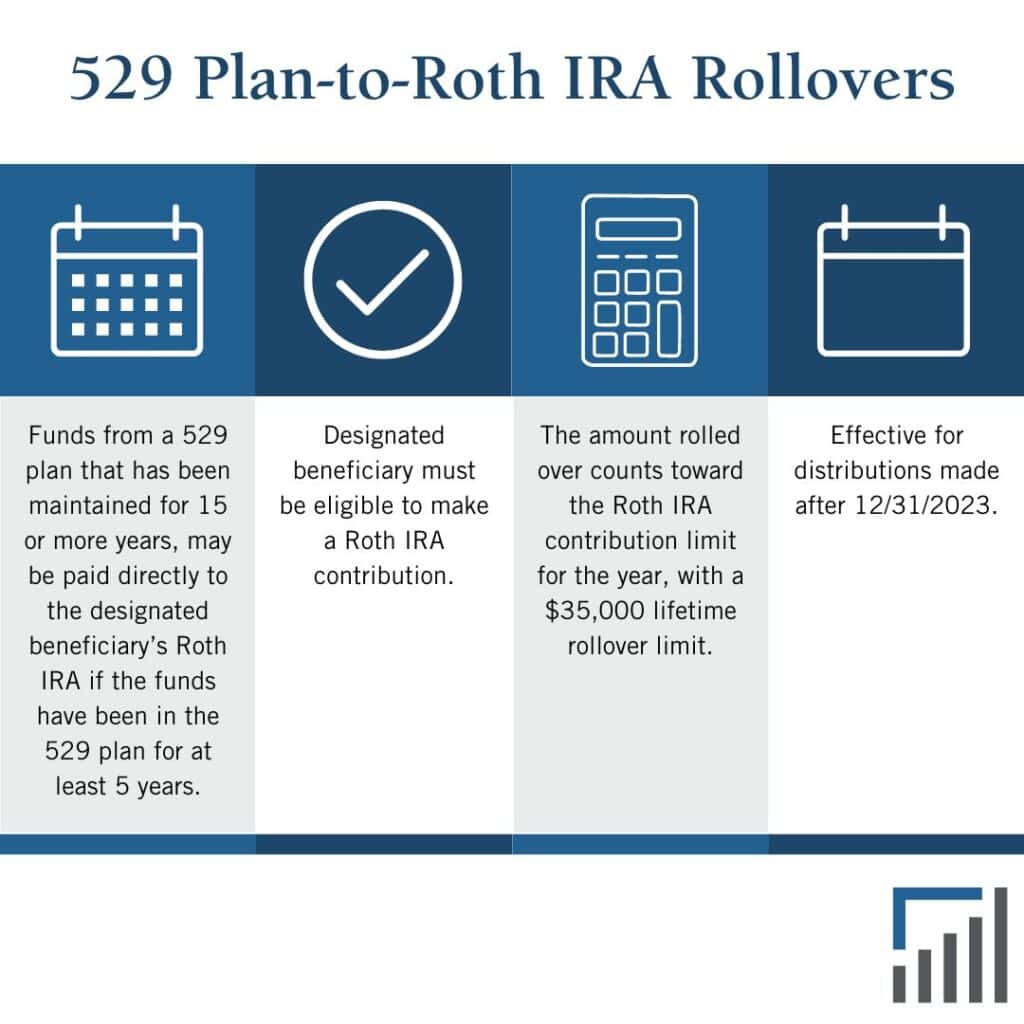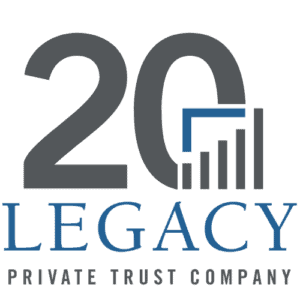On December 29, 2022, the President signed into law the Consolidated Appropriations Act, 2023, the omnibus spending bill for the year. It includes a number of taxpayer-friendly changes that had been in various other bills before Congress. The changes together have come to be called the SECURE Act 2.0.
With the passage of the SECURE Act 2.0, the landscape of financial planning and savings for education and retirement has evolved significantly. A notable development is the option to roll over funds from a 529 plan to a Roth IRA. Beginning in 2024, this change opens up new avenues for financial planning, especially for families who have been diligently saving for education through a 529 plan.
What is a 529 Plan?
Before we delve into the intricacies of the rollover process for a 529 plan, it’s imperative to have a clear understanding of what a 529 plan actually is and its primary purpose. A 529 plan is a type of investment account that offers significant tax advantages designed specifically to promote saving for future education expenses. These plans are unique in that they are sponsored either by individual states, state agencies, or educational institutions, and their name, ‘529’, is derived from the section of the Internal Revenue Code that established their legal framework.
The primary allure of a 529 plan lies in its tax benefits. Contributions to these plans are often tax-deductible at the state level, and the investment growth is free from federal tax as long as the funds are used for qualified educational expenses. These expenses can include tuition, books, and other education-related costs at eligible institutions, which can range from traditional colleges and universities to vocational schools.
Moreover, 529 plans are highly versatile. They can be established by parents, grandparents, or other individuals for the benefit of a designated beneficiary, typically a child or grandchild. The plans offer flexibility in terms of investment options, which can vary from conservative to more aggressive growth strategies, depending on the sponsoring institution’s offerings and the account holder’s risk tolerance.
The popularity of 529 plans has grown over the years, not only because of the tax advantages but also due to their ease of use and the rising cost of education. With college tuition and related expenses increasing steadily, these plans serve as a crucial tool for families and individuals to prepare for educational costs financially.
The New Rollover Rule
Under the new rule, funds from a 529 plan that has been maintained for at least 15 years can be directly rolled over to the designated beneficiary’s Roth IRA, provided the funds have been in the 529 plan for a minimum of five years. This option provides flexibility, especially for those who may not use all their 529 funds for educational expenses.

Eligibility Criteria
To be eligible for this rollover, the designated beneficiary of the 529 plan must be eligible to make a Roth IRA contribution. This eligibility is generally determined by the individual’s income level and tax filing status.
Contribution Limits and Restrictions
It’s important to note that the amount rolled over from the 529 plan to the Roth IRA counts toward the Roth IRA contribution limit for the year. Additionally, there is a lifetime rollover limit of $35,000 per individual. This limit is crucial to prevent the misuse of this provision as a tax loophole.
Implications for Financial Planning
The ability to roll over 529 plan funds to a Roth IRA presents several implications for financial planning:
- Flexibility in Education Savings: Families can now save for education in a 529 plan with the knowledge that unused funds can be redirected toward retirement savings, reducing the risk of overfunding the 529 plan.
- Tax Advantages: Both 529 plans and Roth IRAs offer tax benefits. While 529 plans provide tax-free growth and withdrawals for qualified education expenses, Roth IRAs offer tax-free growth and withdrawals in retirement. This rollover option combines the benefits of both.
- Long-Term Planning: This change encourages long-term financial planning, allowing individuals to seamlessly shift their focus from education savings to retirement savings.
- Consideration of Contribution Limits: Individuals must be mindful of the contribution limits to both 529 plans and Roth IRAs to maximize the benefits without incurring penalties.
Introducing 529 plan-to-Roth IRA rollovers is a significant development in the financial planning landscape. It offers additional flexibility and long-term planning for families saving for education and retirement. As with any financial decision, it’s advisable to consult with a financial advisor to understand how this new option can fit into your overall financial strategy.
If you are a Legacy client and have questions, please do not hesitate to contact your Legacy advisor. If you are not a Legacy client and are interested in learning more about our approach to personalized wealth management, please contact us at 920.967.5020 or connect@lptrust.com.
This newsletter is provided for informational purposes only.
It is not intended as legal, accounting, or financial planning advice.




